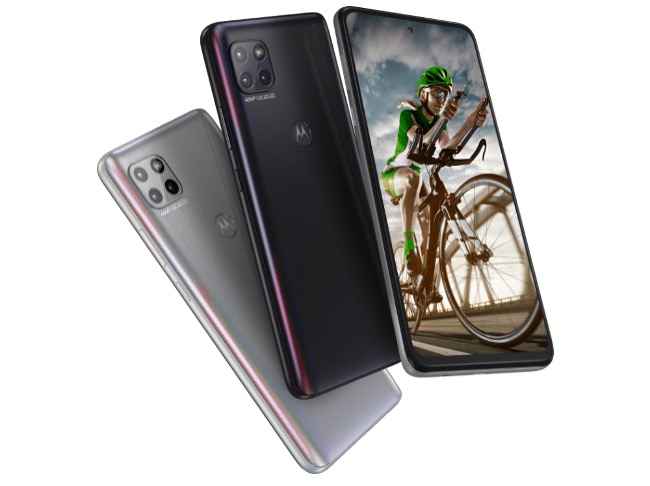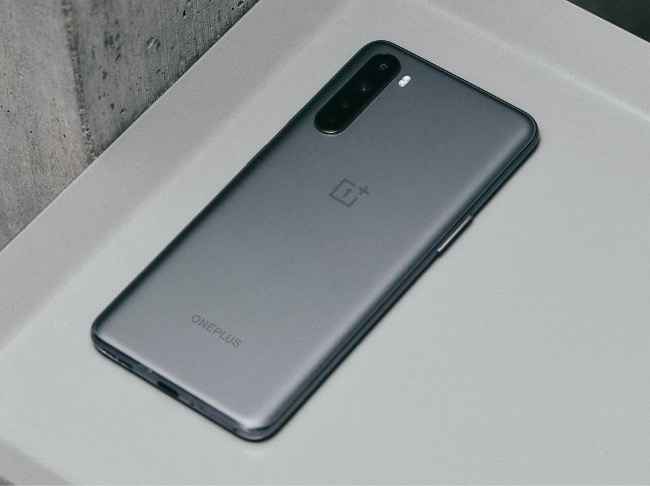Moto G 5G has just launched in India as an affordable 5G smartphone in the mid-range segment. While Indian telecom companies are yet to deploy a 5G network, there is no scarcity of phones supporting 5G connectivity in India. However, 5G as a feature was commonly seen on phones in the high-end and premium segment until the launch of Moto G 5G.
With the Moto G 5G, the company has launched the device at Rs 20,999 in India, making it the most affordable 5G smartphone available in the country. At the price, it goes up against the OnePlus Nord which is its closest 5G competitor starting at Rs 24,999. So how does the Moto G 5G stand against the OnePlus Nord? We find out in this specification based comparison of the Moto G 5G and OnePlus Nord.
Moto G 5G vs OnePlus Nord: pricing and availabilityThe Moto G 5G is priced at Rs 20,999 in India for the sole 6GB+128GB option and will sell online on Flipkart.
The OnePlus Nord starts at Rs 24,999 for the base 6GB+64GB variant, Rs 27,999 for the 8GB+128GB variant and Rs 29,999 for the 8GB+256GB storage option. The phone can be purchased from Amazon India and OnePlus India store.
Moto G 5G vs OnePlus Nord: Design and Display
The Moto G 5G has a plastic build with a squircle camera module on the back while the OnePlus Nord uses Gorilla Glass 5 on the back and a plastic frame. The Moto G is also tad a bit thicker and heftier than the Nord due to the bigger display and battery. It measures 9.9 millimetres in thickness and weighs 212 grams while the Nord is 8.2 millimetres thin weighing in at 184 grams.
The display is where things get interesting for a bit as the Moto G offers a larger 6.7-inch Full HD+ (2400 x 1080 pixels) resolution display that uses an LCD panel and is certified for HDR10 playback.

On the other hand, you get an AMOLED screen on the Nord that measures 6.44-inch and supports 90Hz high refresh rate along with HDR10+ playback. Additionally, the screen on the Nord is topped with a layer of Gorilla Glass 5 which is something the Moto G doesn’t offer.
Moreover, when choosing between the two, it often boils down to the personal preference of either going with a larger screen or slightly smaller display that supports a 90Hz refresh rate.
Moto G 5G vs OnePlus Nord: Under the hoodMoto G 5G is powered by the Qualcomm Snapdragon 750G processor that is fabricated on an 8nm process and brings 5G support to the mid-range segment. The Snapdragon 750G has an octa-core processor with two prime cores running at 2.2GHz and six power-efficient cores clocked at 1.8GHz. The GPU on board is the Adreno 619.
On the OnePlus Nord, we get the Qualcomm Snapdragon 765G processor that is fabbed using a smaller 7nm process and Adreno 620 GPU. There is an octa-core CPU on board that features two performance cores clocked at 2.4GHz and 2.2GHz respectively along with six power-efficient cores running at 1.8GHz.
The Moto G 5G is the first phone with the Snapdragon 750G to arrive in India and it will be interesting to see how it fares in benchmarks and real-world usage against the OnePlus Nord. The Snapdragon 750G uses Kryo 570 cores which is also used on the Snapdragon 865. This was the reason why Geekbench scores of Snapdragon 750G reported earlier seemed better than those of the Snapdragon 765G. Having said that, we will be conducting our own independent tests to see whether the Moto G 5G is able to hold its fort against the OnePlus Nord.
Moto G 5G runs on Android 10 with a light skin featuring some customisations while the OnePlus Nord brings in the same OxygenOS 10 experience that is found in its premium phones.
With the Moto G 5G, users also have an option to expand the storage further by adding a microSD card of upto 1TB. The Nord does not offer such support. Other than that, both the phones have the same set of connectivity features including Bluetooth 5.1, Wi-Fi and USB Type-C.
The ‘batwing’ logo on the Moto G 5G doubles up as a fingerprint reader while the Nord offers an in-screen fingerprint reader.
Moto G 5G vs OnePlus Nord: CamerasMoto G 5G has a triple camera setup on the back that consists of a primary 48MP camera with an f/1.7 aperture, a secondary 8MP ultra-wide-angle camera with 118-degree field-of-view and a 2MP macro camera.
On the front, there is a 16MP selfie camera housed within the punch hole cutout in the centre. The rear cameras can record in 4K at 30FPS and supports EIS.
As for the Nord, it offers a quad-camera setup on the back that has a primary 48MP camera with f/1.8 aperture and OIS support, a secondary 8MP ultra-wide-angle camera with 119-degree field-of-view, a 5MP depth sensor and a 2MP macro camera.
The OnePlus Nord has two selfie cameras on the front, a primary 32MP camera and an 8MP ultra-wide-angle camera with 105-degree field-of-view. The rear cameras can record in 4K at 30FPS with support for OIS and EIS.
We will be testing the camera on the Moto G 5G in detail before drawing conclusions based on the spec-sheet.
Moto G 5G vs OnePlus Nord: BatteryThe Moto G 5G is powered by a large 5,000mAh battery that supports 20W fast charging. The Nord, on the other hand, offers a 4,115mAh battery that supports 30W fast charging.
Here again, the choice is between going for a larger battery phone or a phone with a slightly smaller battery but fast charging support that offers faster recharge times as compared to normal speeds.
from Latest Technology News https://ift.tt/3o6XuaG

Comments
Post a Comment